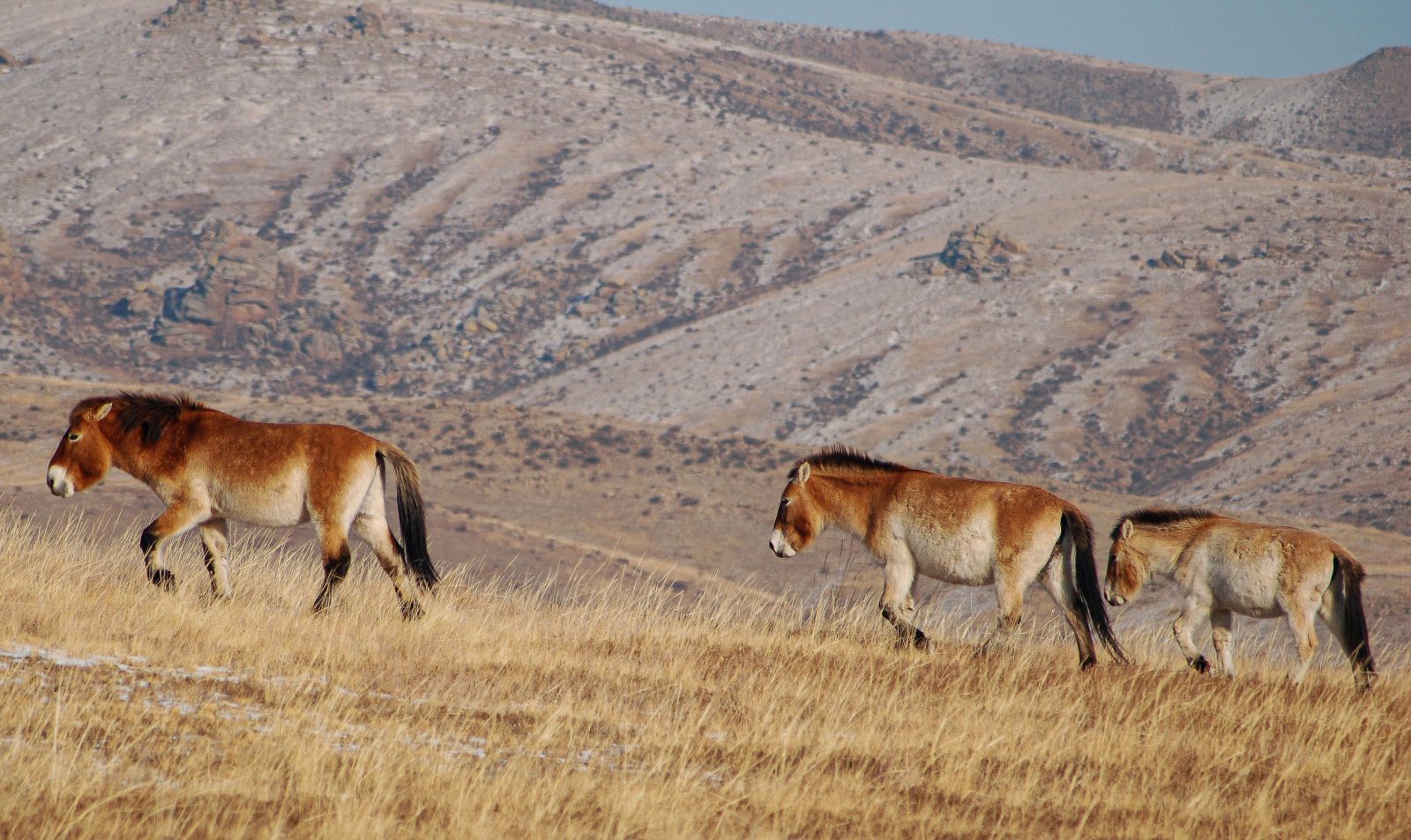The Mongolian Government declared Khustai National Park as a Specially Protected Area in 1993, one year after the initiation of the reintroduction project of the Takhi (Przewalski's horse) to the Khustain Nuruu. The Khustai NP extends through the Khentii Mountains and includes the western edge of the Mongolian steppe at the boundaries of Altanbulag, Argalant and Bayankhangai Soums of Töv Province. The park is about 100 km from the capital city of Ulaanbaatar to the west.
The Khustai NP covers 50,600 ha of land which is home to 459 species of vascular plants, 85 species of lichens, 90 species of moss, and 33 species of mushrooms. 44 species of mammals have been recorded, including Altai wapiti, Mongolian gazelle, roe deer, wild boar, wild sheep, ibex, Mongolian marmots, grey wolf, Eurasian lynx, Pallas's cat, red fox, corsac fox, and Eurasian badger. The 217 species of birds include the golden eagle, lammergeier, great bustard, whooper swan, black stork, Daurian partridge, and little owl. There are 16 species of fish, 2 species of amphibians, and 385 species of insects (including 21 species of ants, 55 species of butterflies, 10 species of bush crickets, and 29 species of grasshoppers). A new species of soil insect has been found in the Khustai and given the scientific name of Epidamaeus khustaiensis.
In 2002, the Man and the Biosphere Reserves organization of UNESCO certified the Khustai National park as a member of the world biosphere network of natural reserves. The Khustai NP was enrolled as a member of IUCN in 2007.




